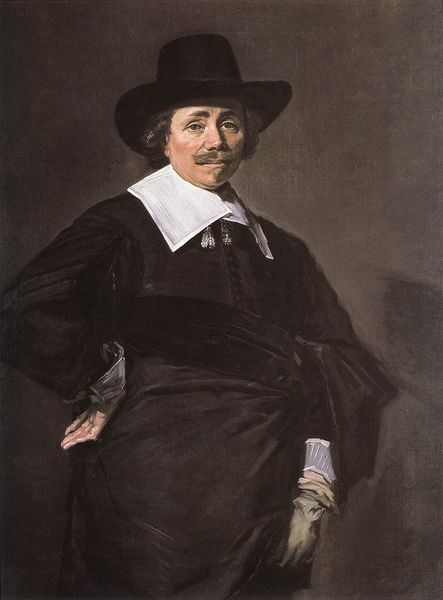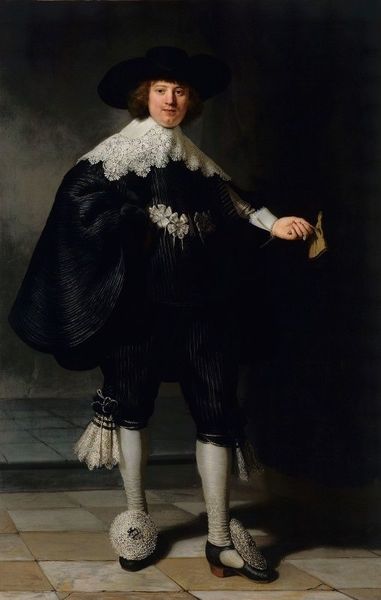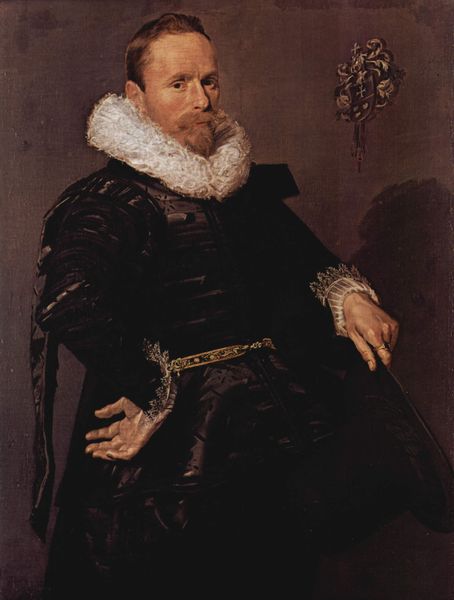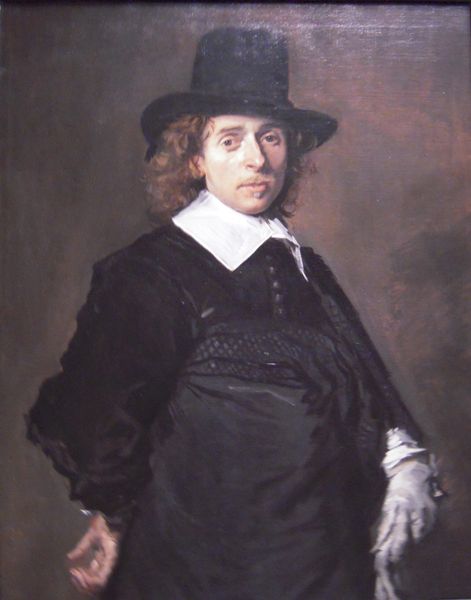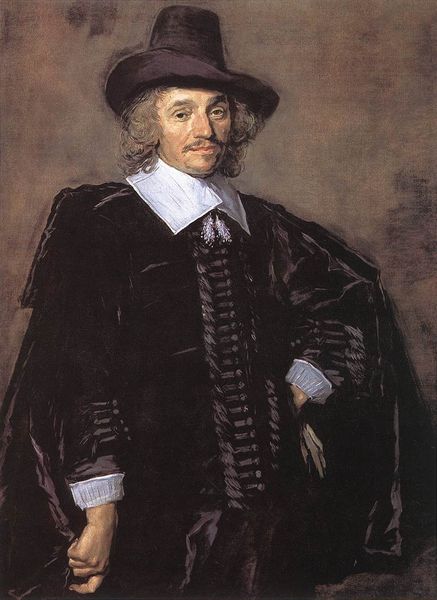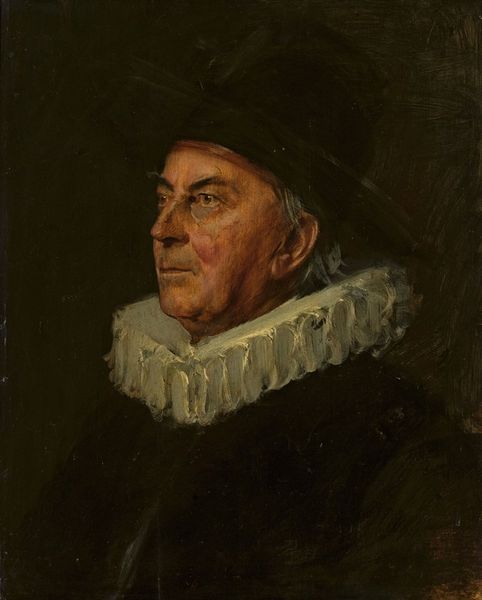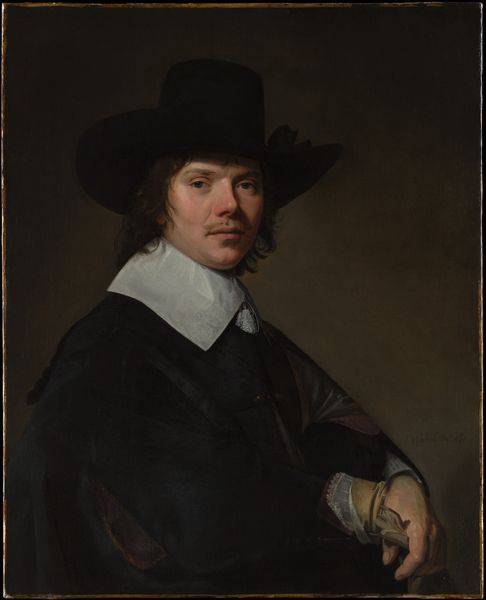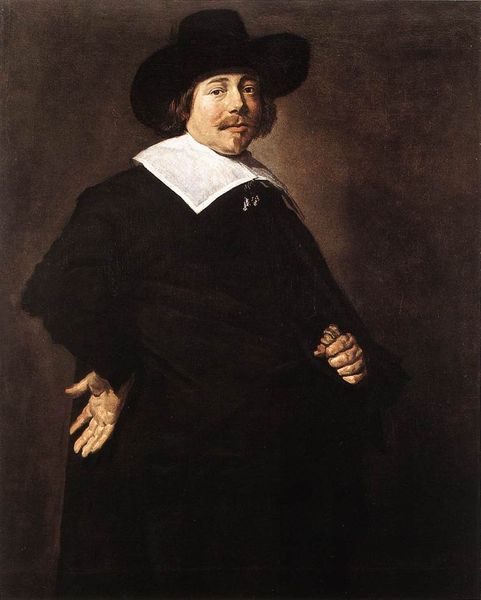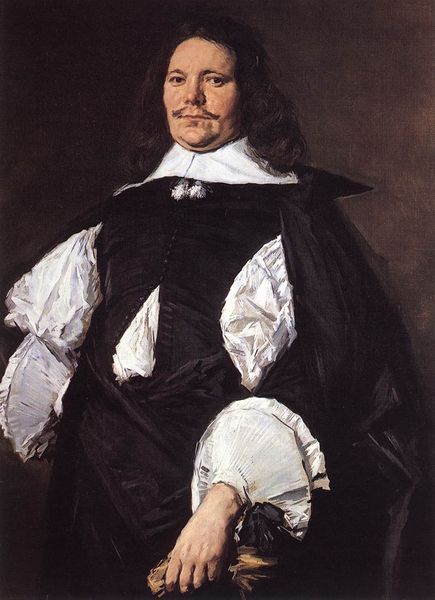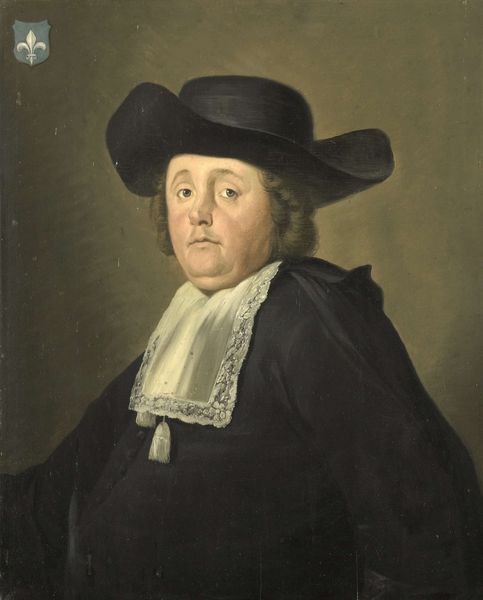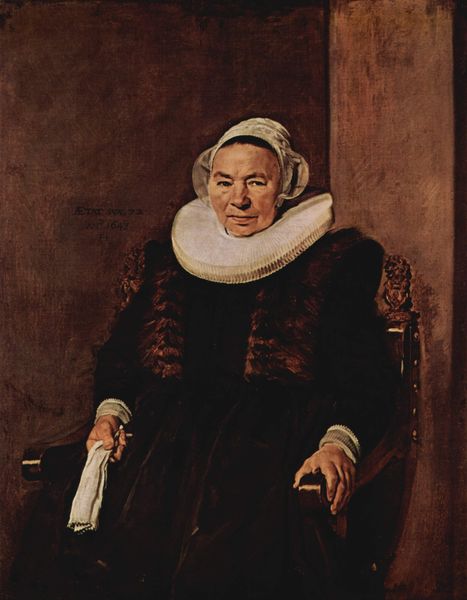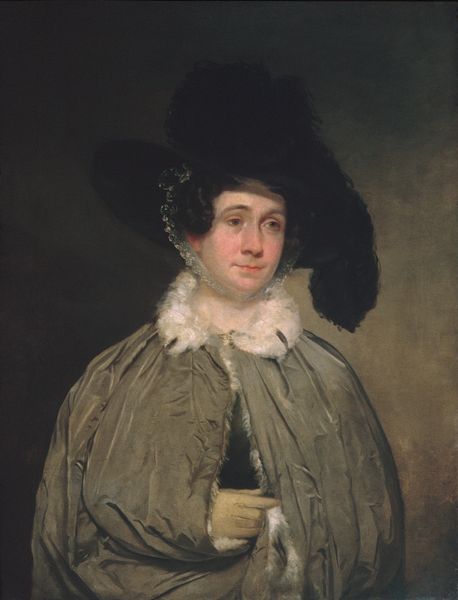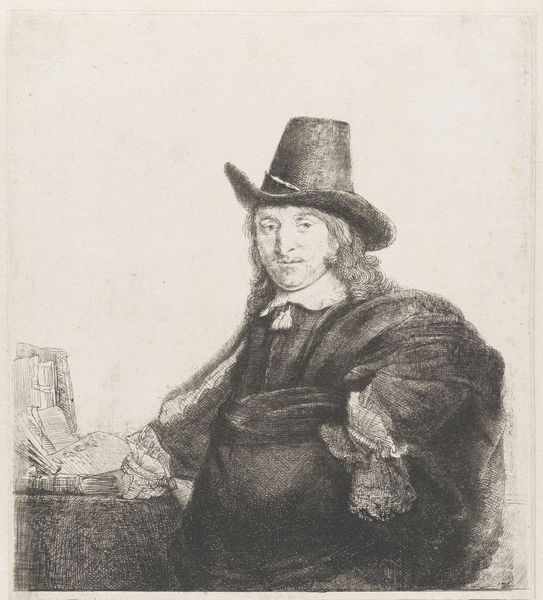
oil-paint
#
portrait
#
baroque
#
oil-paint
#
figuration
Dimensions: 118.7 x 94 cm
Copyright: Public domain
Editor: We’re looking at Frans Hals's "Portrait of Paulus Verschuur" from 1643, currently at the Met. He's depicted with such confidence, but it's a rather stark composition with a dark palette. What strikes you most about this piece? Curator: It's precisely that confidence you mention, but also think about what that portrayal *means* in 17th century Haarlem. Hals wasn't just painting a likeness, he was constructing a social image. Think about the rising merchant class – what did portraiture offer them that it hadn't before? Editor: You mean beyond just capturing their physical appearance? Curator: Exactly. The patronage shifted from the aristocracy, with the Baroque style portraying wealthy commoners. Hals helped to define *how* this new class saw itself and wanted to be seen: independent, successful, and civic-minded. The almost confrontational gaze, the luxurious clothing. What do those choices tell you? Editor: It speaks to power, I guess. And that’s communicated through what they own…clothing, stature... Curator: Precisely. But power isn't a vacuum, right? Who did those displays of wealth impress, and who might have felt excluded by them? Who did the merchant class try to emulate with Baroque-era dress, stature, and symbolism? Editor: That’s fascinating! It's much more than just a portrait. It’s about a shift in societal power dynamics reflected on a canvas. Curator: Indeed. The social role of art – both in its creation and reception - always gives paintings their greatest meaning to those in a position to witness the change. Editor: I never considered portraits as such strong historical indicators. Curator: It shows how art museums teach those lessons to wider audiences.
Comments
No comments
Be the first to comment and join the conversation on the ultimate creative platform.
